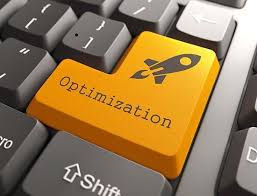Optimizing Extruder Performance with Pressure Transducers: Is It Worth Your Time?
- Bob

- Sep 5
- 2 min read

Optimizing an extruder goes beyond speed and throughput—real improvements come from controlling what happens inside the barrel. Melt pressure transducers are a window to provide the visibility needed to monitor and fine-tune conditions in real time, directly influencing three critical areas: process stability, data accuracy, and overall optimization including energy efficiency. By including review of these sensors, process engineers gain the insight required to push performance while reducing variability and waste.
1. Optimize Process Stability
How: Adjusting the transducer placement, orientation, or calibration ensures accurate real-time melt pressure readings.
Impact:
Engineers and operators can detect pressure fluctuations or spikes quickly.
Reduces the risk of overpressure events that cause melt fracture, die lines, or inconsistent extrusion.
Supports consistent throughput and more uniform product quality.
Example: Moving the transducer closer to the die (without violating installation guidelines) can capture subtle changes in pressure that indicate early die buildup.
2. Improve Data Accuracy and Reliability
How: Regularly calibrating the transducer, checking zero points, and ensuring the sensor is clean from polymer buildup or thermal damage.
Impact:
Provides engineers with precise, reliable data to monitor trends over time.
Better accuracy enables predictive maintenance—detecting worn screws, blocked screens, or material variations before they cause defects.
Accurate melt pressure data is essential for troubleshooting extrusion issues and validating process models.
Example: A properly calibrated transducer allows engineers to correlate small pressure changes with slight viscosity shifts in the melt, improving process control.
3. Enable Process Optimization and Energy Efficiency
How: Fine-tuning transducer settings (such as filtering signals, adjusting response times, or correcting for thermal offsets) can produce smoother, less noisy readings.
Impact:
Engineers can confidently optimize screw speed, barrel temperature, and die gap settings based on trustworthy pressure profiles.
Reduces over-processing or over-compensation, which can save energy and reduce scrap.
Supports data-driven decisions for new materials, colors, or formulations.
Example: Clean, stable transducer data allows the team to see exactly how changing polymer formulations affect pressure, enabling faster process optimization for new recipes.
Adjustments to melt pressure transducers don’t just “fix the sensor”—they improve process consistency, provide engineers with actionable, high-quality data, and allow optimization for efficiency and product quality.
If you want to talk and explore.... we'll be here!




Comments